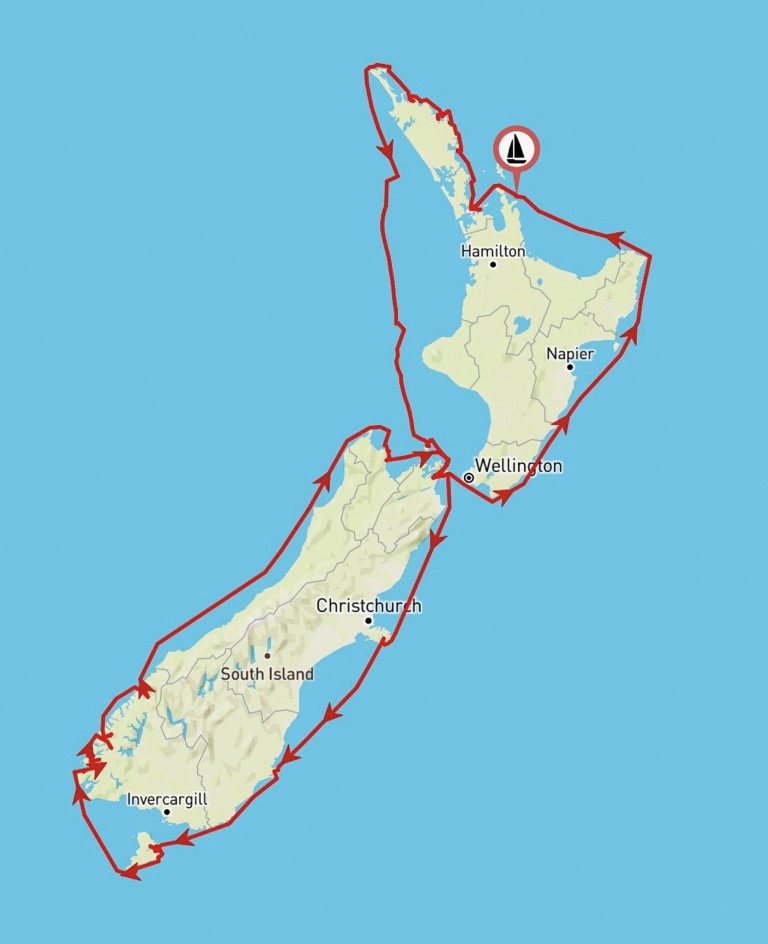

Bruce and Raewyn Bartley took their Jeanneau 57 yacht Mimu to Fiordland and Stewart Island, completing a figure-eight circumnavigation of New Zealand along the way.
Fiordland is like another planet – you are really taking a trip into the mountains. In the mountains you carry appropriate equipment, stay watchful, and prepare for severe weather and Fiordland is the same, except that you can go there by boat. And if you’re determined enough, you can go there on your own boat.
They are a tough but friendly lot down there. The commercial fishing boats tend to be solid units with high bows, low windage and big engines. Their skippers are capable, weather-beaten and helpful and there is a sense of ‘we all need to look out for each other down here’.
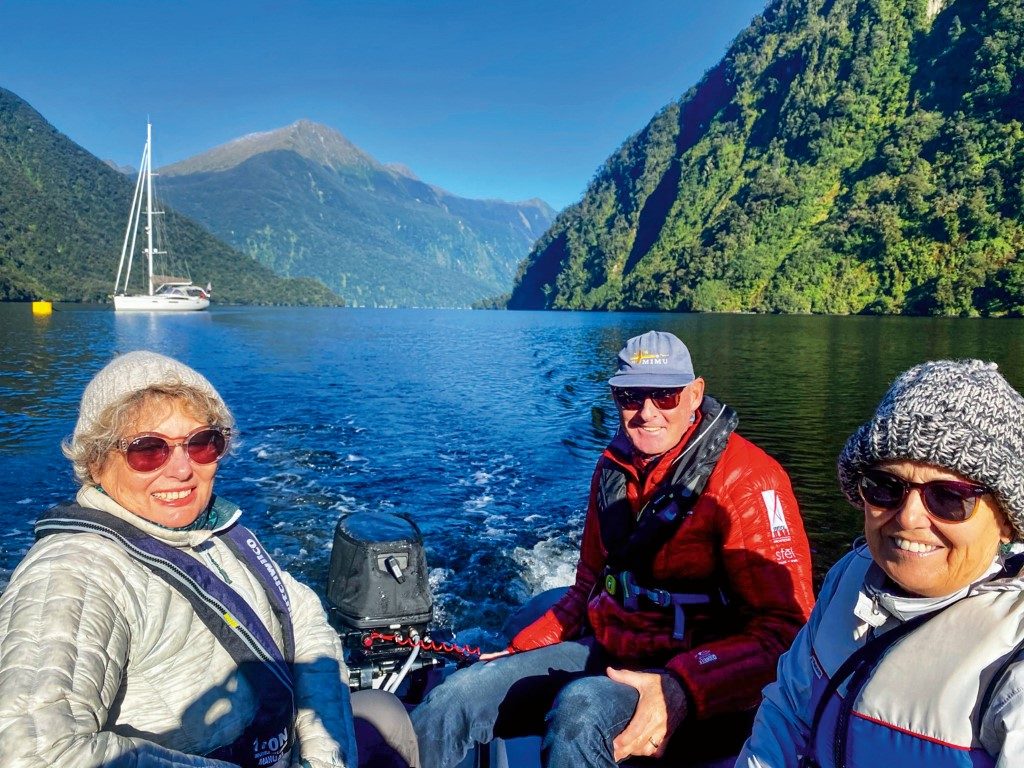
All boats in the region are overseen by a daily radio sched by Meri Leask from Bluff Fisherman’s Radio, VHF channel 64 every morning and channel 61 every evening. This is far more intense than we are used to around the Hauraki Gulf, and with good reason. In that remote and rugged area, it is best others know where you are in case you need assistance, or can assist someone else who needs help.
The fiords are all different. There are four major and numerous minor fiords, all fully-exposed to the Tasman Sea at between 45° and 49° south, so well into the Roaring Forties. A ‘heave’ (swell) of 4m or more is pretty normal. For cruisers, an excellent reference book is the Boatie’s Guide to Fiordland, available from the Mana Cruising Club.
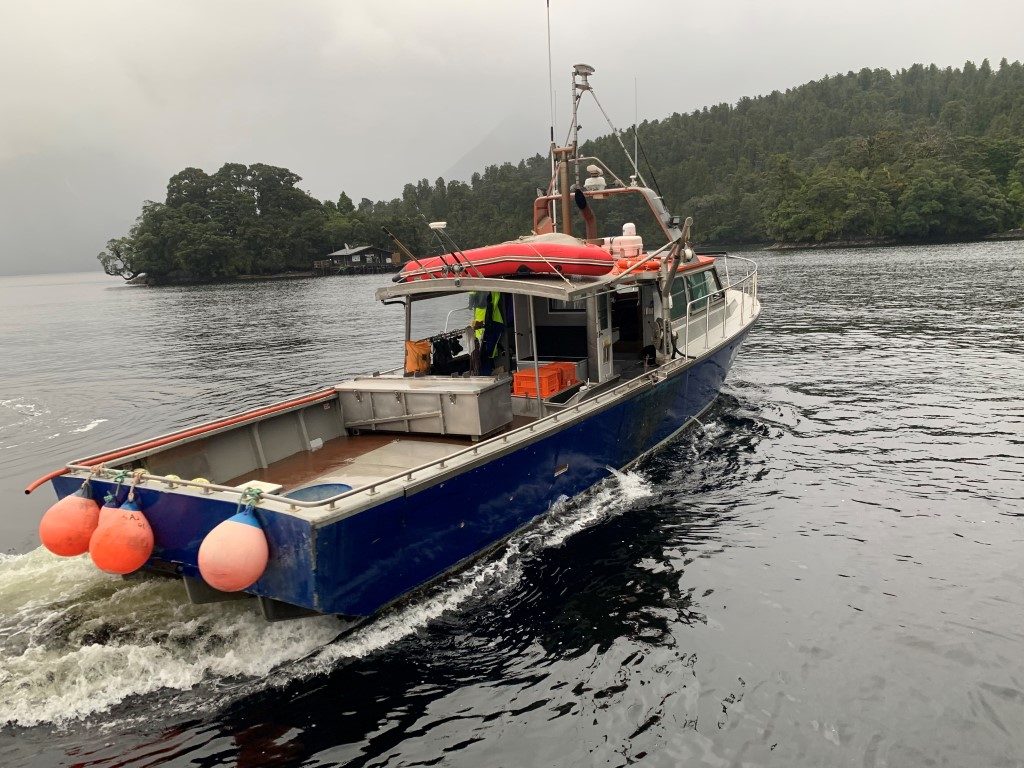
We traversed the 100 miles of open ocean from the Mutton Bird Islands below Stewart Island with a fortunate southerly and then had a cold wait offshore for first light before entering Dusky Sound.
Dusky Sound is a gem, the longest fiord at 24 miles, and with so much living history around Pickersgill Harbour. It looks much the same today as it did when Captain Cook visited in 1773. Cascade Cove, Sportsman’s Cove and Luncheon Cove are all memorable – and let’s not forget the tasty blue cod that are so easy to catch!
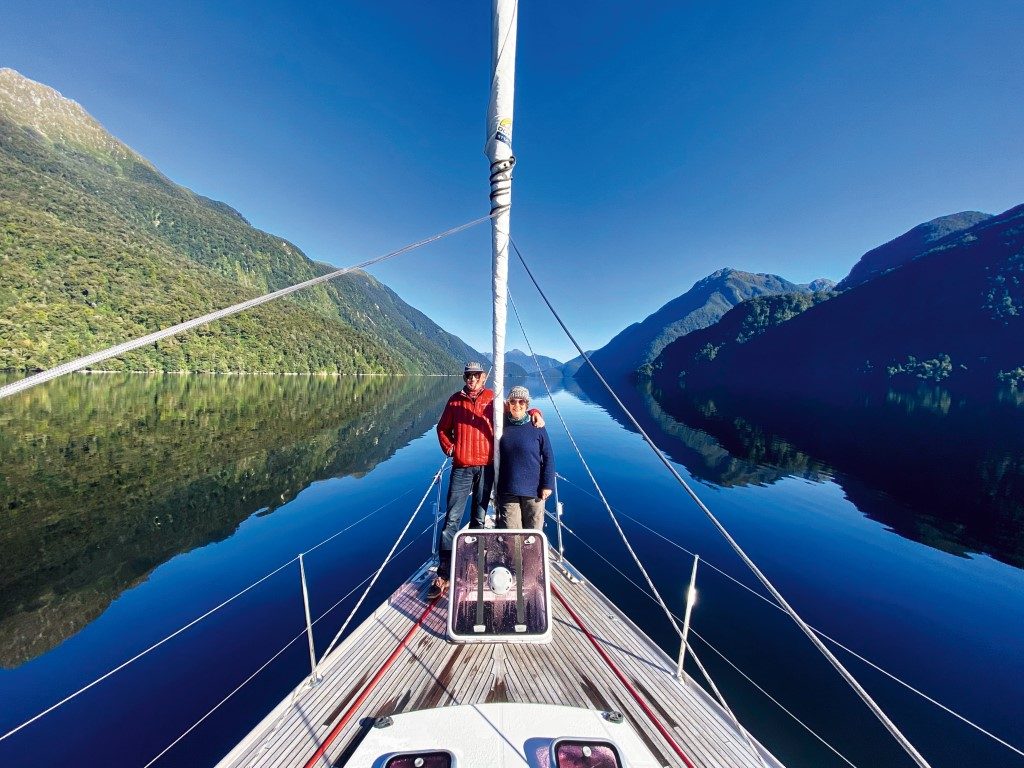
We joined the charter launch Pembroke in Sportsman’s Cove one evening, as you do. I asked the skipper what sort of wind strength he prepares for inside when it’s blowing 30 knots outside the sounds. His reply was two or three times the outside wind strength. Aha! So, 60–90 knots then… I confess I was skeptical, until two nights later when we suffered exactly that experience.

We were snugged in tight in Stick Cove, right where the east-west Wet Jacket Arm connects to the north-south Acheron Passage. Stick Cove is small, hard-rock-sided and very pretty. With a single bow anchor and two stern lines, what could possibly go wrong?
At 2am we found out. Thunder and lighting and torrential rain, accompanied by gusts from the left and then from the right, estimated at well over 60 knots. All crew on deck!
The bimini blew to bits and conversation was difficult with all the noise. When our 40kg anchor dragged it was time to go – and what a high-pressure task it was to get out of the narrow entrance in the violent blackness to the relative safety of Wet Jacket Arm. Great work from a very solid crew!
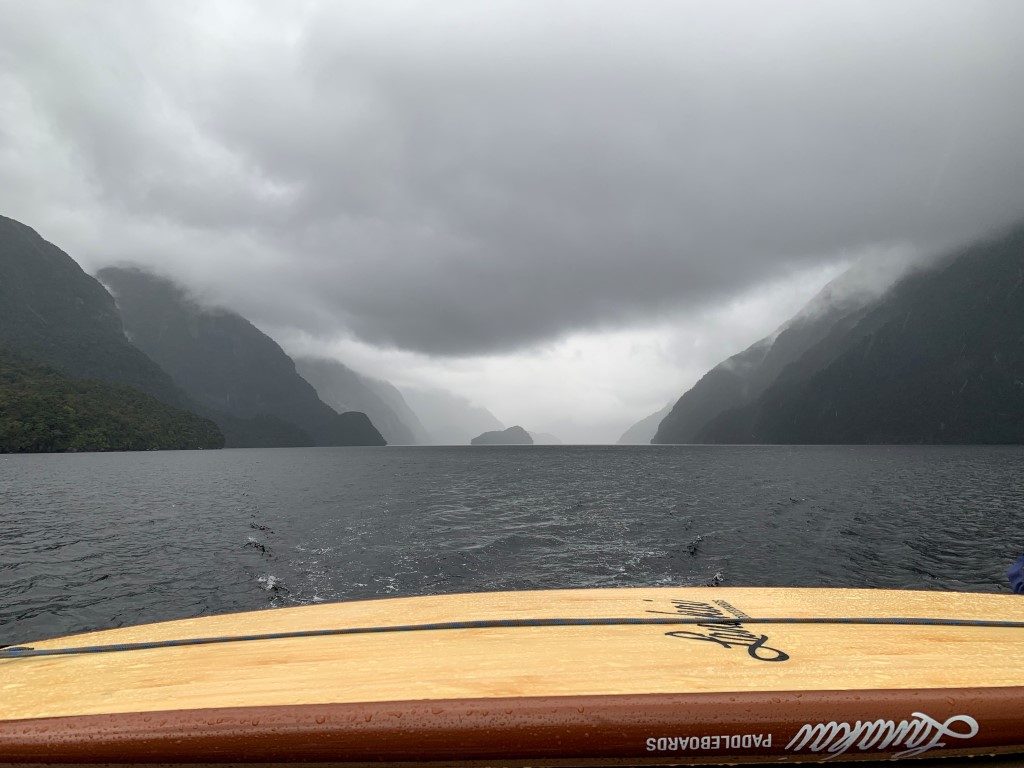
After this event we became keen enthusiasts for the many large mooring buoys located in various places inside the fiords. There’s great peace of mind to be had in the small hours when the wind is howling through the yacht’s rigging if you are secured to a 90mm-thick hawser. Again, the commercial operators were very willing to share knowledge and advice on the preferred anchorages.
Forty miles up the coast, Doubtful Sound has a narrow-ish entrance – thus the name – but it then extends through many long, narrow arms with names like Deep Cove, Precipice Cove and Crooked Arm. We managed a crew change in Doubtful Sound, our new crew having flown into Queenstown and then driven to Manapouri, where they took a launch across the lake, followed by a bus over Wilmott Pass to Deep Cove. At Deep Cove they hitched a ride on a fishing boat to get to Mimu. The departing crew reversed the procedure.
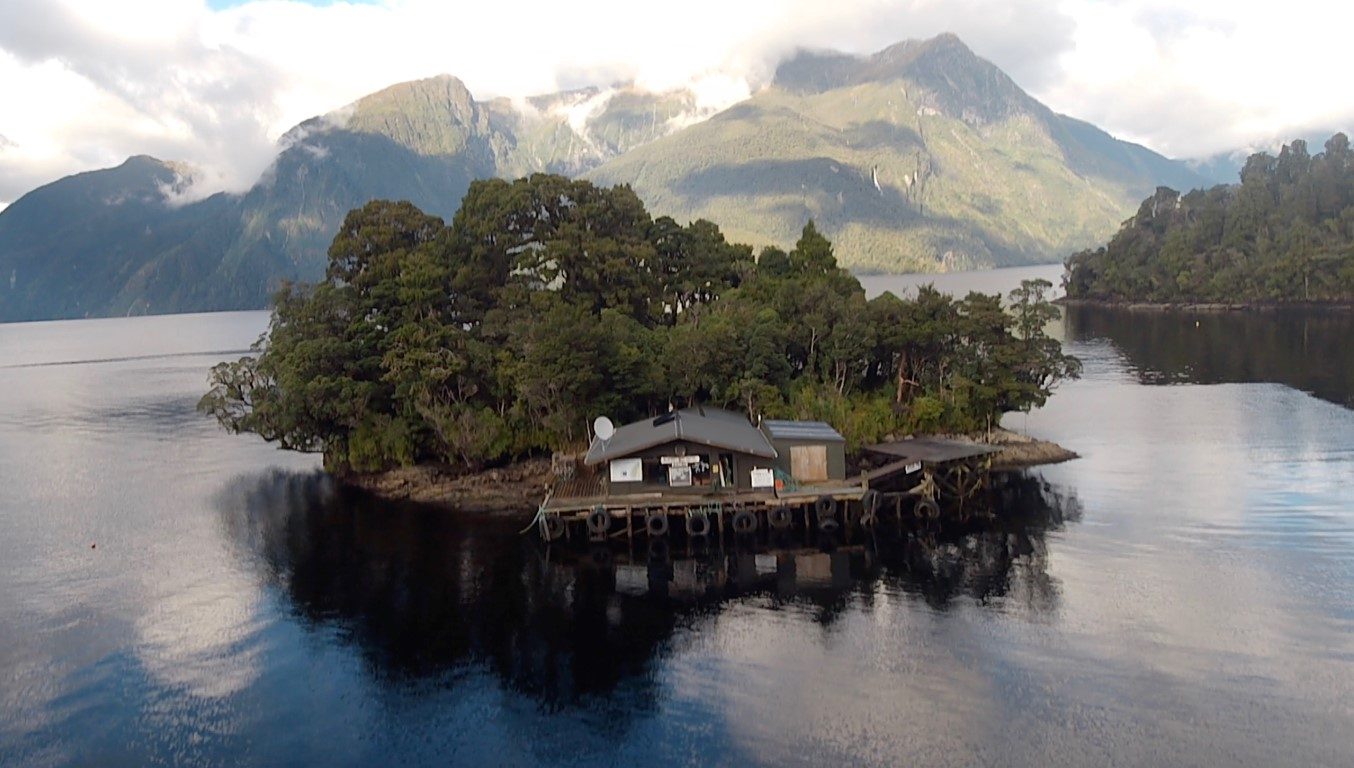
Blanket Bay is a unique spot near the entrance to Doubtful Sound. There is a building there and a helipad, well-used by the crayfishing boats working the coast north and south. It seems that the crayfishing export industry is very much alive and well after Covid.
The northernmost sound is Milford Sound. It is short but breath-taking, with sheer and overhanging rock walls thousands of feet high on either side. We stayed in Freshwater Basin where we were hammered for a day by a nor’west front that delivered more than 100mm of rain in 24 hours.
There are many tour boats based at Milford Sound but with reduced international visitors, the bus park was much quieter than I remembered from pre-Covid days.
Crew management
We started out with a plan to visit Fiordland and then extended that plan into a figure-eight circumnavigation. The original timeframe was two months, but we ended up exceeding that by three weeks. My advice would now be to go earlier in the season, before it gets so cold. We left Auckland on March 19, after the America’s Cup. It wasn’t perfect timing, but if you wait for everything to be perfect, you’ll never get there at all.
The figure-eight around New Zealand was set up like a one-boat rally, with seven distinct stages. We had various family members and friends joining us on different stages. They all understood that the timing could not be exact and that the best strategy would be to get into position close to the rendezvous and then standby for instructions.
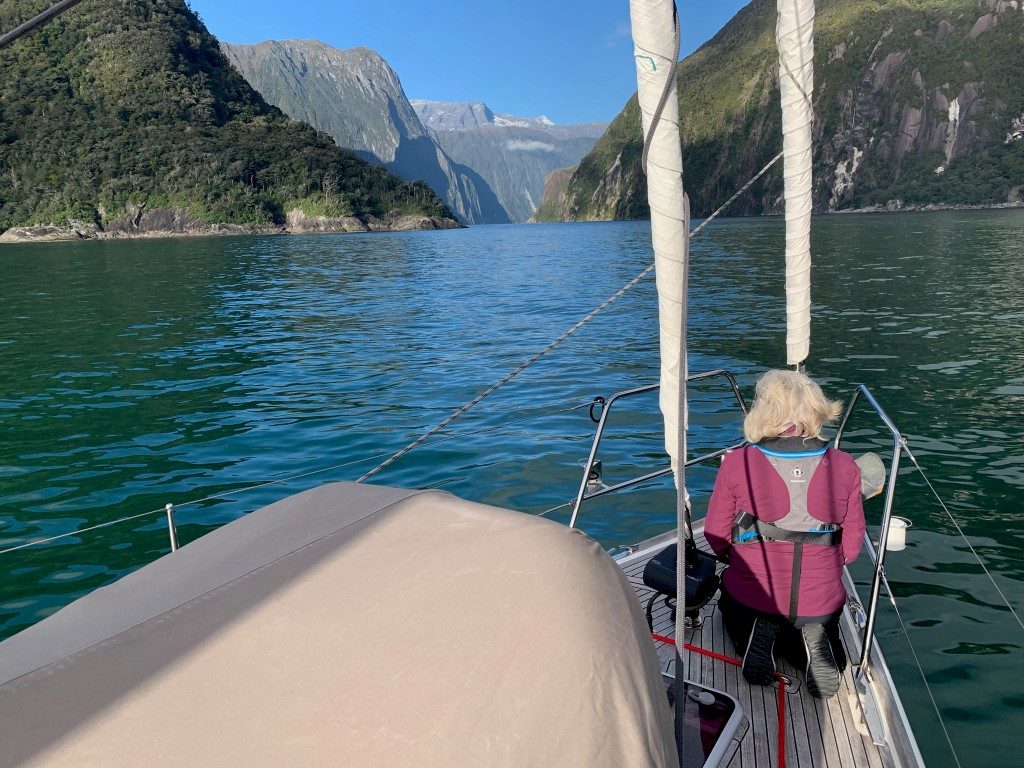
We had a total of 21 people on board at different times – never less than three and not more than seven at any one time. It was more fun to share the experience with others, though it did mean we often had less experienced sailors on board. The core team included Jean Russell – five times across the Atlantic – and others with many years of experience, so there was enough know-how to keep us safe in this sometimes challenging, wilderness environment.
Stewart Island
We arrived at Stewart Island at dawn, heading first for Half Moon Bay and the town of Oban. However, it was a lee shore with 25 knots blowing, so we left and headed a few miles to the south where we entered Paterson Inlet. Stewart Island is bigger than we expected, and Paterson Inlet is about the size of Auckland’s inner harbour.
Ulva Island is inside the inlet and an absolute stunner with kiwis and wekas everywhere underfoot in the pristine bush, unconcerned by the presence of humans. There is a water taxi service making frequent trips to and from Ulva Island every day. Further up Paterson Inlet are the remains of an old whaling repair base, which is fun to explore.

From our anchorage at Golden Bay, it was just a short walk over the hill to Oban. One shop manager I spoke to said they had been “flat-out” since the Covid lockdown finished, as many Kiwis had decided it was a good time to see the country. Stewart Island has become a popular destination. She declared that the locals were all in need of a rest!
After a week or so we headed down the rugged southeastern coast of Stewart Island, stopping at the pretty and peaceful Port Adventure and then heading further south to Port Pegasus.
Weather Forecasting
Any trip like this is, of course, dominated by the weather. We used Windy, Metvuw, Marine Forecasts and PredictWind via an IridiumGo satellite link. The cell networks are surprisingly available up to 20nm offshore around much of the country, but not in Fiordland. Mimu is a fast passage-maker, like all Jeanneau yachts, and with 140hp available, we ended up motor-sailing quite a bit of the time. Careful management around suitable weather windows was the name of the game.
Heading north from Fiordland, the exposed run up the west coast of the South Island treated us well. We had a following wind and seas with beautiful sunrises across the snow-covered Southern Alps. Abel Tasman was also kind to us, and then a second run at D’urville Island – the tide rip at French Pass is quite something and needs thoughtful timing – followed by a second run across the Marlborough Sounds to Cape Jackson and into Queen Charlotte Sound.
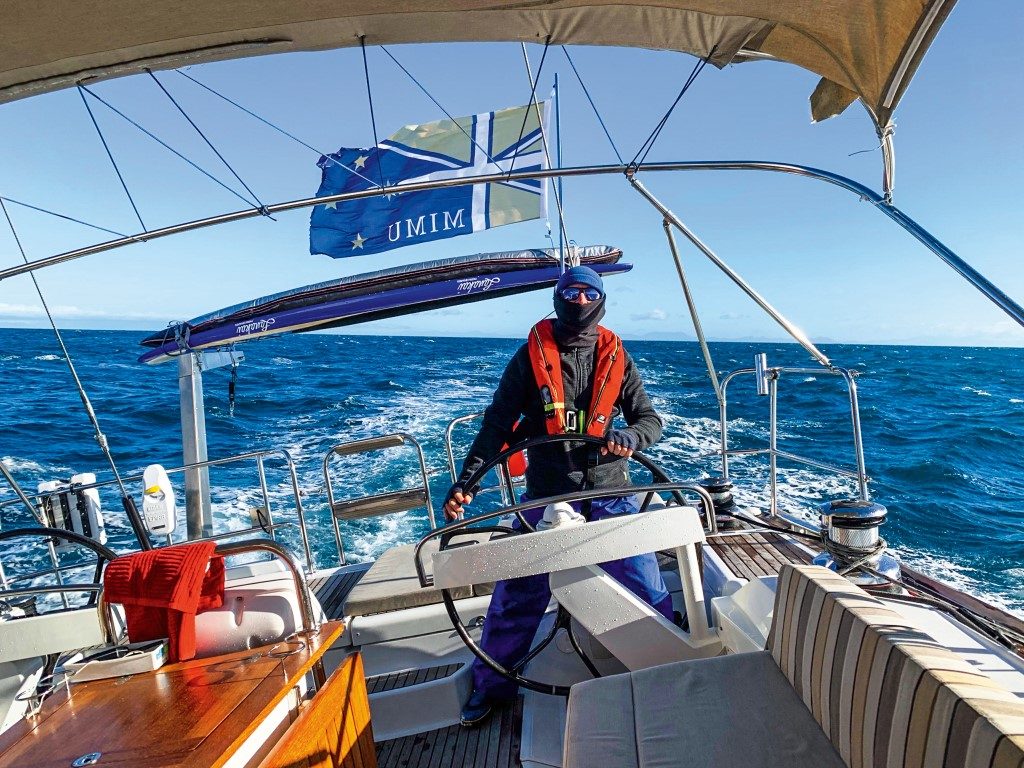
Beautiful Picton became our second home while we waited for repairs to the engine’s turbo. Turbo-diesel engines will clog their turbos with soot with too much light running, as we found out the hard way. Picton has a happy marina and quite a cosmopolitan village feel with pubs and cafes galore. We made friends with other cruisers and fisherfolk based there and used the very extensive marina facilities and services at Picton and nearby Waikawa. The marinas are clean and tidy, well run and a pleasure to visit.
Biosecurity is a big deal nowadays, especially in the Bay of Islands and the Marlborough Sounds, so you’ll need documentation showing a recent haul-out or clean. Information is on the websites for Opua, Picton and other ports.
The Marlborough Sounds is extensive and we’ll visit again.
A whole New Zealand summer could easily be spent exploring just Pelorus and Queen Charlotte Sounds, along with Abel Tasman Park further west. There are plenty of good staging places while waiting for the right weather window for Cook Strait.
Heading north again, East Cape and the Bay of Plenty were straight forward, though with more rubbish weather across the Bay of Plenty. We rested up at Great Mercury Island.
What a fabulous spot the Mercury Islands group is! Crystal-clear water and a friendly family of dolphins that adopted us for
a couple of days, eyeing us up closely, and then hanging around the boat and playing with the anchor chain. If you haven’t visited the Mercurys yet, do add them into next summer’s schedule.
Conclusions
The southern parts of New Zealand are tough to reach but very rewarding once you get there. Be prepared for adventure – the weather can be unpleasant and even dangerous, but with good planning and by keeping a constant weather eye, you will find many places to shelter.
On returning to the North Island, I was struck by how pleasant the entire area is, from the Mercurys in the south, through the Hauraki Gulf Islands and north to Mangonui. It’s all fabulous, quite compact, and one of the world’s best cruising grounds.
Our intrepid journey around New Zealand was great fun – and it confirmed just how good we have it here.
